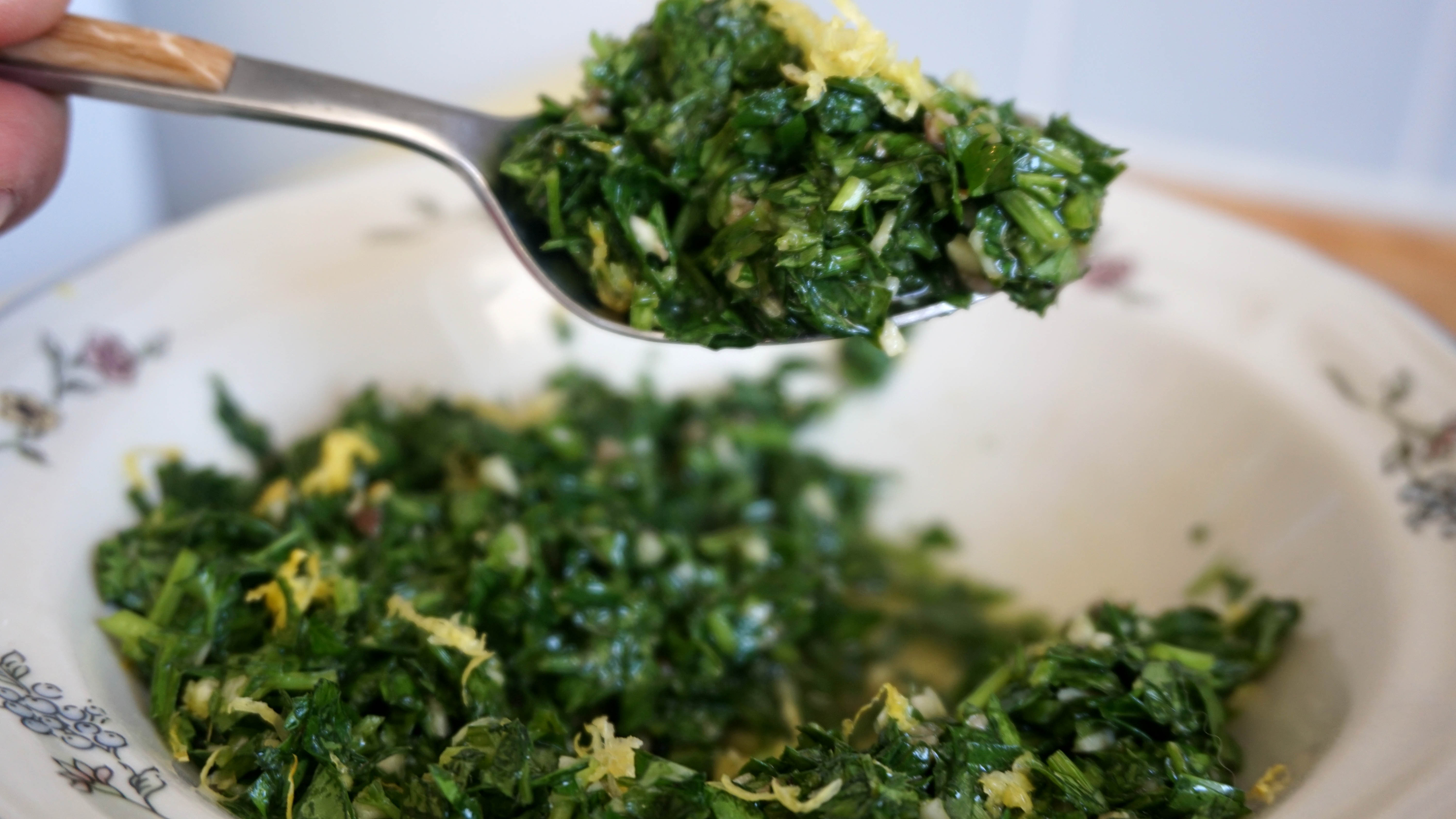Gremolata Is So Much More Than Just Parsley Pesto
I regularly cook with parsley over basil. I prefer its light earthiness, its ability to mesh with a wide variety of bold ingredients. Parsley plays well with other flavors, lifting them up like a supportive colleague. While I do crave the singularly aromatic nature of something like gnocchi pomodoro, there aren't too many dishes where I go ham-fisted with basil.
With basil, you've got to be careful because he wants to be the star of the show. He's the ball hog. Once you introduce him into the mix, well, everything tastes like basil. Parsley, on the other hand, sets you up for an alley-oop. The day I learned parsley could be much more than garnish came when a chef at a restaurant where I worked picked up a sprig of parsley from a plate, threw it at me, and said, "This isn't the fucking Holiday Inn, dude." He's right: Parsley deserves more than to be hastily thrown atop some floundering red sauce dish. Its versatile nature is why I prefer gremolata to pesto.
Traditionally, gremolata is a mixture of chopped parsley, garlic, and lemon—and that's it. No olive oil, no seasoning. Its purpose is to brighten up braised meat dishes like osso buco, its pungent tartness acting as a counterbalance to the deep, dark, luscious slow-cooked meats. It's not just for red meat, however. It livens up smashed potatoes and crostini. It lends a hand to some simply grilled white fish or poached eggs. Add a spoonful over a grilled skirt steak. Whatever you do with it, you'll find its brilliant and uplifting nature to be a useful tool in your arsenal. I started to wonder about gremolata's history, about how long exactly it's been used in Italian cooking, so I pulled out Italy's most sacred gastronomic tome.
Pellegrino Artusi's The Art of Eating Well mentions gremolata-like additions, though without formal use of the word. Artusi's recipe for veal scallopine does call for chopped parsley and garlic to be sprinkled atop the meat as it finishes, and he also sings the praises of a good Italian salsa verde, or what the French called sauce ravigote—a mix of parsley, basil, chervil, anchovy, and capers brought together by raw egg yolk and olive oil. Artusi champions parsley well, yet I found no reference to gremolata in the book. Its direct origin seems to be lost in history somewhere.
The Art of Eating Well is a regional study of Italy as much as it is a historic one. Throughout every region, there seems to be some variation of a parsley mixture that gets put on top of meat or fish. It would make sense for the south of Italy to use capers and anchovy, and the North to use Parmigiana Reggiano and toasted pine nuts. To me, gremolata isn't some predetermined three-ingredient recipe. It begs to be tinkered with.
My interpretation of gremolata is a parsley mixture that is chopped, not pulverized in a blender, that brings together multiple ingredients into a sharply acidic and brightening condiment. Though its ingredients may vary, gremolata shines because of its balance. In that way, I think parsley might be the most wholly Italian ingredient of all. Parsley is a sign of harmony and usefulness. Whenever we think of Italian cooking we often think of tomatoes, basil, or garlic, but I submit parsley to be the face of their national food flag.
I find the recipe below to be one to be the most flexible. It consists of four main ingredients: parsley, garlic, lemon, and anchovy. Anchovy adds an unctuous quality that I think takes it to the next level. It also takes two minutes to put together. I threw it on top of some smashed gold potatoes for lunch and it was delicious.

Four-Ingredient Gremolata
- 2 bunches parsley
- 2 cloves garlic, finely minced
- 1 lemon
- 1 can (2 ounces) anchovies, diced; use half if you're reluctant
- 1 Tbsp. extra-virgin olive oil
- Ground pepper to taste
Chop the stems from the bunch of parsley in one fell swoop, and don't worry about completely dissecting each one. Parsley stems carry a lot of flavor in their own right, so it's fine to leave a few in there. Add the garlic and anchovies. Make sure to add the oil from the can as well. Squeeze and zest in a whole lemon. Now add a tablespoon of olive oil, stirring together while adding ground pepper. You'll notice I didn't include salt here because that's the magic of anchovy.
